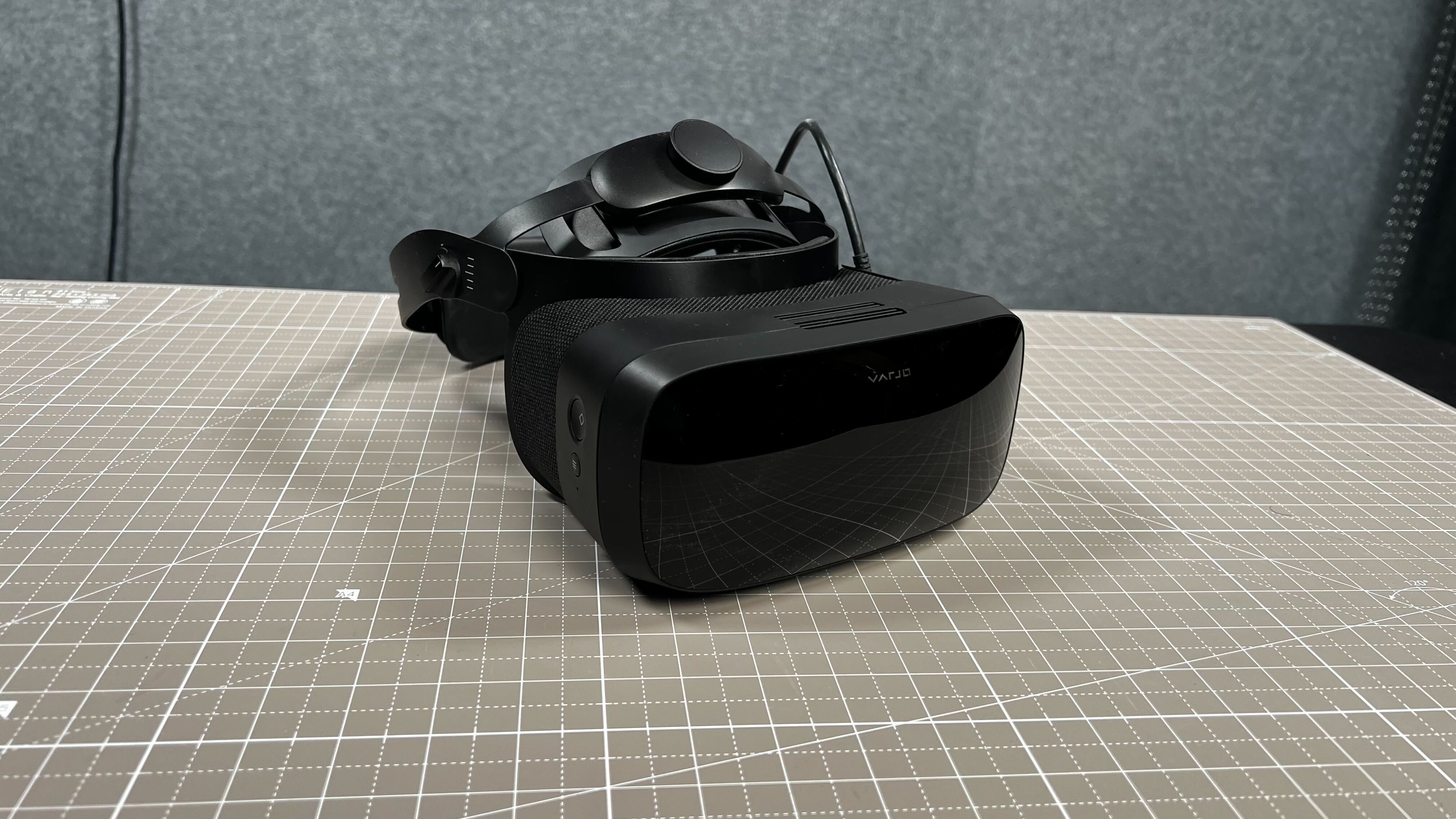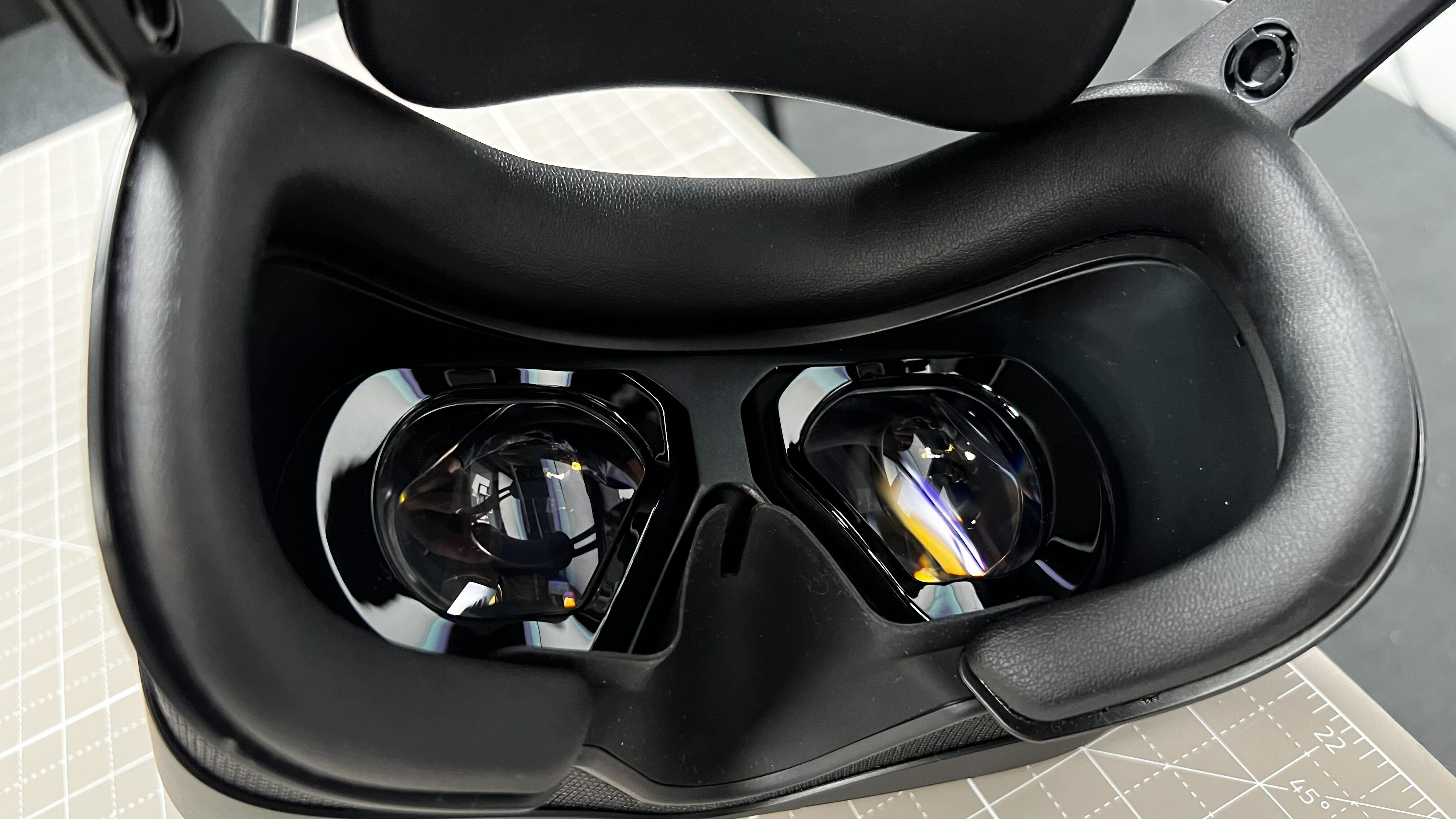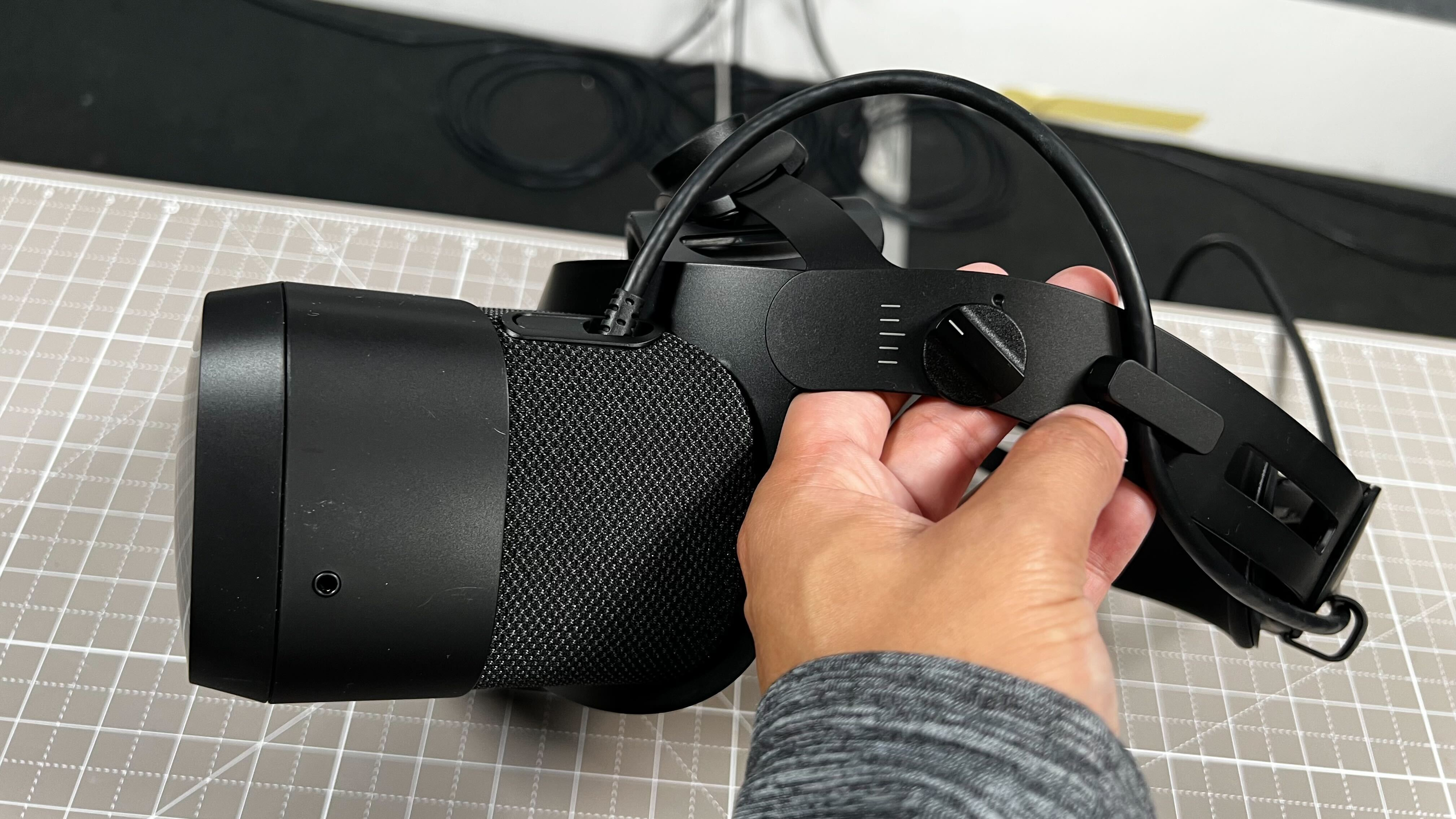Our Verdict
A VR headset with a great display and wide FOV, but one that still feels expensive despite a recent price drop. It's also important to note it requires you to buy base stations and controllers separately.
For
- Lovely display
- Comfortable to wear
- New reasonable price
Against
- Requires base stations
- No controllers included
- Heavy
- Doesn't work with AMD GPUs
PC Gamer's got your back
The Varjo VR headsets have always skewed more towards enterprise than a traditional consumer-grade VR experience. You know, for those folks with intense Microsoft Flight Simulator or whole F1 cockpits in their garage. The Varjo Aero, however, is looking to bridge the gap between the casual VR gamer and someone who would refer to the real world as 'meatspace.'
The headset itself is really swinging for the fence. Its dual Mini-LED LCD lenses support up to 2880 x 2720 per eye resolution with a 90Hz refresh rate with a diagonal FOV of 134 degrees. The Valve Index, its closest rival, offers 1440 x 1600 per eye with a refresh rate of 120Hz (and experimental 144Hz). The Varjo also has automatic IPD adjustment, integrated eye-tracking, and connects to your PC via a split USB-A and DisplayPort cable.
Traditional VR games benefit from the Aero's lovely display. Half-Life Alyx, the best VR game to showcase any roomscale headset, runs smoothly and looks great, often making me stop and really soak in the sights of City 17 whenever headcrabs weren't trying to eat my face.
I've been playing a lot of Warhammer Age of Sigmar, a first-person fantasy action game requiring the player to make strange gestures to cast spells and fight. The Aero handled all of that with no issue.

Tracking: SteamVR Base stations
Lens tech: Dual Mini-LED LCD
Resolution: 2880 x 2720
Refresh Rate: 90Hz
FOV: 134°
IPD: 57–73mm
Audio: 3.5 mm audio jack
Weight: 680g
Price: $1,000
Some of Aero's major issues stem from it still feeling like an enterprise headset. It has fairly demanding PC requirements, so anything less than an RTX 3070 will run into problems. Currently, the headset doesn't support PCs with AMD graphics cards, so if you fall into that category, you're out of luck.
The setup is all done through the Varjo Base software. Thankfully, I'm happy to report that getting up and running was a breeze. During my time with the Pimax Crystal setup process, I was partly traumatized by the ordeal. However, if you've never set up base stations, finding somewhere to stick them could be a little stressful, but Varjo does well walking through it step-by-step and pairing your controllers.
As comfortable as the headset is, with its convenient front and back adjustable headbands, it's still a pretty hefty headset. It weighs about 680 grams (1.5 lbs), not counting what headphones you have on. I opted for the bundled earbuds since I didn't want to wear a wireless headset in addition to the goggles. I'm just not into the Maelstrom gang look from Cyberpunk 2077.


As much as I love failing around like a madman in Beat Saber, the headset's weight started to wear me down.
As much as I love failing around like a madman in Beat Saber, the headset's weight did start to wear me down. After about an hour of playing, my head and neck needed a break. Its heft is definitely something to consider if you play many VR games that require a lot of physical exertion.
As much as I prefer headsets with inside-out tracking, the Aero does an excellent job with hand-tracking using the base stations in nearly all the VR I tried. Games that require pin-point accuracy, like rhythm-shooter Pistol Whip or Beat Saber, are flawless, and I only had one or two instances of the headset losing track of the controllers, mainly because one of the original Vive controllers Varjo sent me for review might have a bad battery.

✅ You're keen on upgrading your Valve Index setup: The Aero is compatible with VR controllers and base stations. It has a gorgeous display, wide FOV, and pretty comfy despite being a little heavy.
❌ You're a VR newbie: The Meta Quest 3 is right around the corner for nearly half the price and comes with controllers and supports inside-out tracking, which means no need to buy base stations.
You should note that the Aero itself has no accessories or extra hardware. There are no controllers or base stations included. It is a SteamVR headset and will pair with all the popular VR controllers, however. You will then need to get yourself some Valve Index base stations, which sell for $150 a pop, to get it up and running. I had two in my small office, so I doubt you'd need more than that.
During my review, Varjo had slashed the price of the Aero to nearly half its current retail price, down to $1,000. At $1,990, the Aero is a very tough sell. If you still need to get base stations or controllers, that's adding an extra $400-$500 to your bill. At $1,000, it feels less egregious but still pretty pricey for just the headset alone.
For VR novices looking for a more casual experience, you're better off waiting to see how the Meta Quest 3 turns out. That new headset will be half the price of the Aero and comes with everything you need out of the box (no base stations needed).
Varjo Aero is a solid "next step" VR headset. It's for anyone who owns a Valve Index, is ready for their games to look better on a more comfy headset, and wants to future-proof their VR setup. If you are okay with weight and reusing a lot of your old gear, the Aero should be right for you.
However, some cheaper, better alternatives will do the job for everyone else.
A VR headset with a great display and wide FOV, but one that still feels expensive despite a recent price drop. It's also important to note it requires you to buy base stations and controllers separately.

Jorge is a hardware writer from the enchanted lands of New Jersey. When he's not filling the office with the smell of Pop-Tarts, he's reviewing all sorts of gaming hardware, from laptops with the latest mobile GPUs to gaming chairs with built-in back massagers. He's been covering games and tech for over ten years and has written for Dualshockers, WCCFtech, Tom's Guide, and a bunch of other places on the world wide web.


